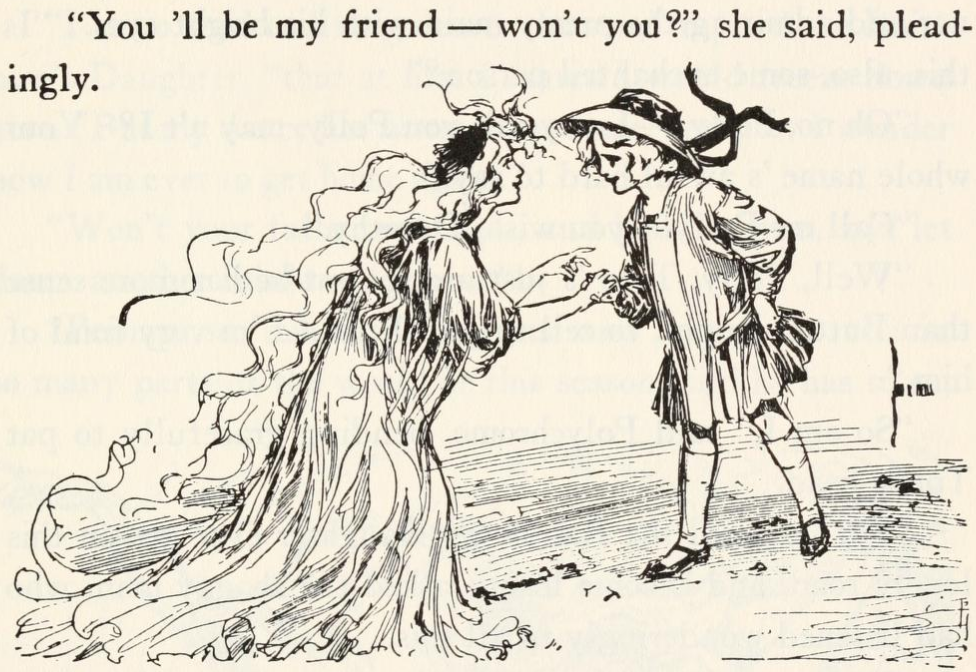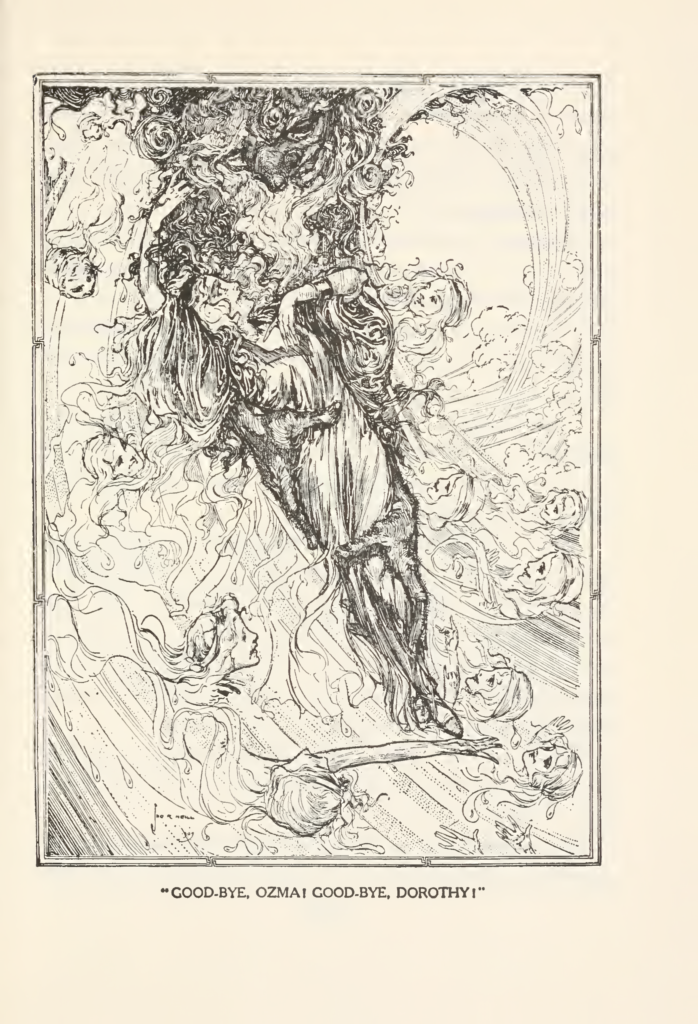
Polychrome is more interesting because, while many of us have encountered annoying boys, few people have experience with sky-fairies. Dorothy, Toto, the shaggy man, and Button-Bright encounter her after walking a couple hours from Foxville. As usual for Baum, Polychrome, the rainbow’s daughter, is a transcendentally beautiful child: “A little girl, radiant and beautiful, shapely as a fairy [what does that mean?] and exquisitely dressed, was dancing gracefully in the middle of the lonely road, whirling slowly this way and that, her dainty feet twinkling in sprightly fashion. She was clad in flowing, fluffy robes of soft material that reminded Dorothy of woven cobwebs, only it was colored in soft tintings of violet, rose, topaz, olive, azure, and white, mingled together most harmoniously in stripes which melted one into the other with soft blendings. Her hair was like spun gold and floated around her in a cloud, no strand being fastened or confined by either pin or ornament or ribbon” (60).

Dorothy tends to call Polychrome “Polly.” Although Polychrome always dances, she is afraid because she is lost and has never been away from her father, the rainbow. Her constant movement is only to keep herself warm, the surface of the world being colder than the sky, apparently. Maybe Polychrome lives in the thermosphere. This dainty fairy is used to eating dewdrops and mistcakes, finding the food of the surface people so filling she eats only the smallest morsels. She instantly loves the shaggy man because of his magic (more on that later) and agrees to accompany him, Dorothy, and Button-Bright to Oz, where Dorothy hopes Ozma can return Polly to her home using the Magic Belt. Unlike Button-Bright, Polychrome contributes to the group: It is her who initiates their escape from the Scoodlers (120).
Oddly enough, Ozma does not return Polly to the rainbow. Instead, on his way back home from Oz, Santa Claus (who attends Ozma’s birthday party) stops by the rainbow to let him know what is going on. Shortly after Santa’s departure, the rainbow descends around Dorothy and the others. “With a glad cry the Rainbow’s Daughter sprang from her seat and danced along the curve of the bow, mounting gradually upward, while the folds of her gauzy gown whirled and floated around her like a cloud and blended with the colors of the rainbow itself” (258). Polly tells them goodbye, and Ozma remarks, “perhaps we may meet the Rainbow’s daughter again, some day” (260). Note the inconsistent capitalization of “Rainbow’s Daughter.” Neill depicts various other sky-fairies emerging from the rainbow to greet Polly, a whimsical and lovely scene recalling, though without the high degree of sexuality, the nymphs much loved by painters. It might seem odd that Polly lives on or inside her father, but Baum is unclear on whether the father is literally the rainbow or if the father is a being called the Rainbow who controls the rainbow we see. Besides, you live on your mother, Earth, so don’t judge.
